Unlocking Your Inner Grandpa at Seoul’s Hidden Thrift Gem
Exploring real street fashion at the South Korean capital’s largest flea market, a favorite of Kiko Kostadinov and an escape from the grip of social media.

Even at its most extreme, the street style in major cities around the world tends to follow trends. But the seniors you meet at Dongmyo Flea Market in Seoul hit you with a totally different vibe—a fresh, unexpected style that feels almost revolutionary. Imagine hanbok paired with cowboy hats, mechanical watches with bootcut jeans, and checkered shirts with neon T-shirts. It’s a motley parade of fishing, hunting, hiking, and jogging gear, all worn by elders with swagger to spare.
I first discovered Dongmyo in the early 2000s when I was a fashion-obsessed college freshman at Chung-Ang University. Back then, I started with vintage shops at Dongdaemun Shopping Town, then moved on to the labyrinth of secondhand stores at Gwangjang Market, now a hotspot for tourists. Secondhand fashion had its trends too, but seeing the same T-shirts and windbreakers over and over got boring fast. It was on my daily bus route between home and school that Dongmyo first caught my eye.If you’re an insider or think you’ve got your finger on the pulse of what’s hot, and you feel like today’s fashion is stuck in a rut, Dongmyo will shake up your perceptions. It’s not just about buying stuff—it’s about seeing how these elders break stereotypes. This place can dismantle your preconceived notions of style, much like it did for Kiko Kostadinov.An avant-garde designer known for subverting practical workwear, Kostadinov visited Dongmyo in 2018 and called it the “best street in the world” on his Instagram, showcasing the wild local grandpas. He wasn’t exaggerating. From sportswear to casual, workwear to utility gear, and even something a little off-kilter from traditional Korean clothing, Dongmyo is full of looks you won’t find anywhere else. Chang Sukjong, former editor-in-chief of Cracker Your Wardrobe, one of Korea’s pioneering street fashion snap magazines, has been a regular at Dongmyo for decades. “For directors or designers with a keen eye, the style of Dongmyo’s older generation could be a real source of inspiration,” he says. “I’d love to see more talented artists discover the distinctive charm that only Dongmyo offers.”
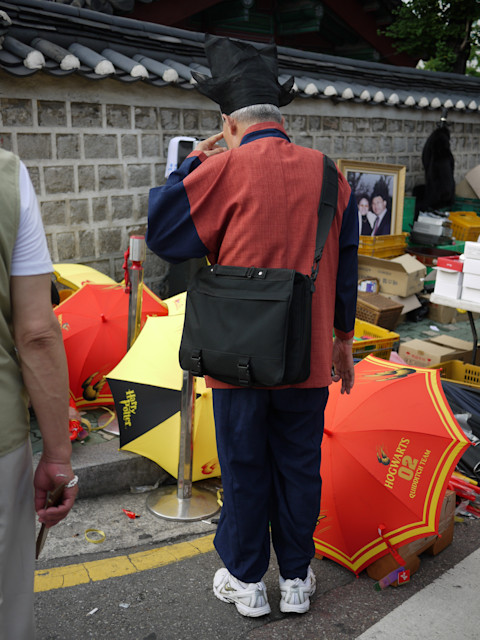
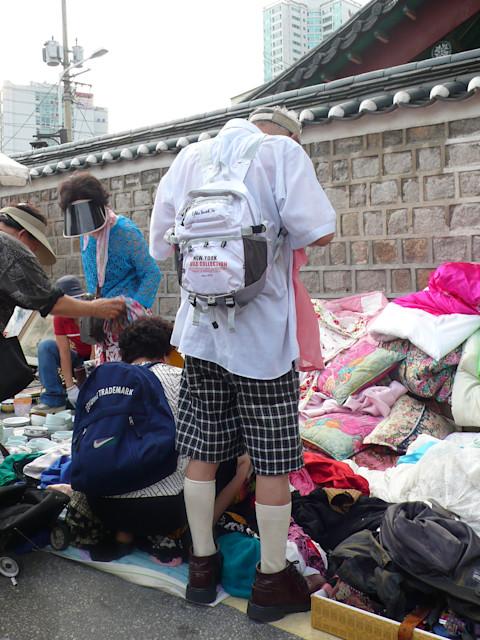
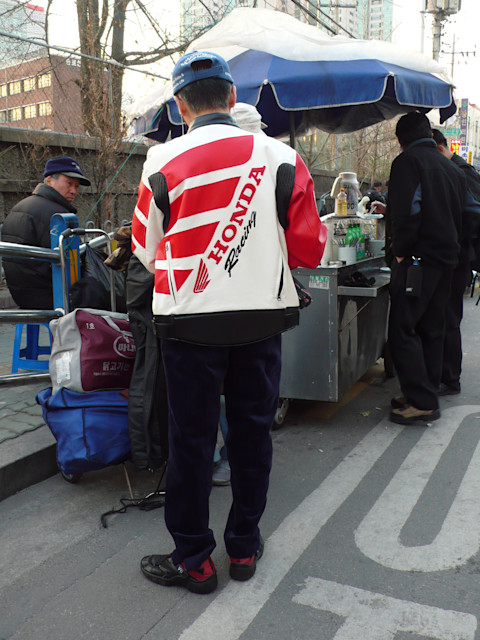
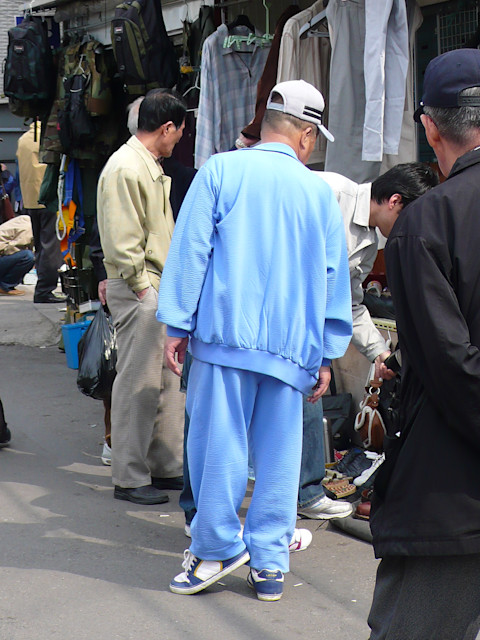
Dongmyo (東廟), the name of both the neighborhood and its subway station on lines one and six, originates from the East Shrine, dedicated to Guan Yu, the famous general from China’s Three Kingdoms period. Built in 1601, this shrine is now surrounded by hundreds of secondhand vendors who form one of Seoul’s largest and most visually stunning flea markets. It’s a place where the influence of mainstream fashion feels distant, leaving room for a raw, authentic expression of style—what some might call the “real” street fashion of Seoul’s elders.This is the kingdom of the ’50s, ’60s, ’70s, and beyond. For day laborers, it’s affordable workwear for just a thousand won (a few dollars). For thrifty moms, there are clothes to dress the whole family. And for the younger crowd who’ve heard the buzz? A mix of colorful vintage clothes, accessories, and home decor items. Lately, there’s been a noticeable rise in younger visitors, but it’s a positive shift—more people embracing recycled fashion means a growing appreciation for sustainable style. Kim Dohee, creative director of XLIM, is no stranger to the treasure hunt that is Dongmyo. “I always make a stop at Dongmyo’s vintage military stores,” he says. “They’re affordable, and it feels like they’re letting you name your price. The Dongmyo Flea Market feels like a fashion community for the older generation. There’s often a sense of bravery and energy I get from their outfits.”
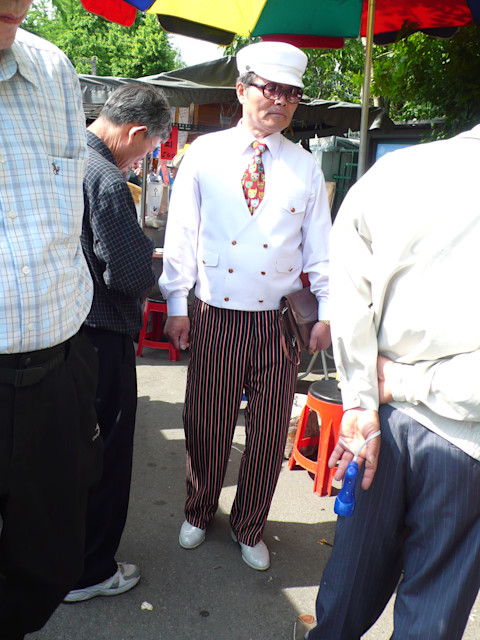
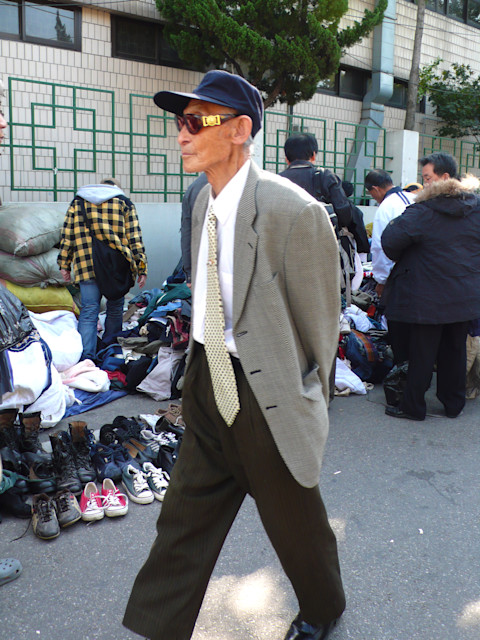
As a fashion journalist living in Seoul for decades, I remember a time when there wasn’t a single store selling vintage German army trainers in the city. Of course, at Dongmyo I stumbled upon a pair of worn-out German trainers—back when Hedi Slimane was still at Dior Homme. I also scored a Jean Paul Gaultier denim jacket from the mid-to-late ’90s for a few thousand won after some haggling with an elderly vendor, long before Gaultier’s retirement. I even unearthed a Phoebe Philo CELINE shirt in one of those towering piles of clothes. And I have a two-volume Korean paperback edition of Malcolm X’s autobiography, published in the ’70s and never reprinted since, along with a vase by an unknown artist. Both are still in my studio today.After countless trips to Dongmyo—armed with the black plastic bags, practically a signature shopping item, overflowing with secondhand clothes and trinkets—I found myself increasingly drawn to the style of the seniors. Since I started my blog yourboyhood.com in 2006 to document Seoul street fashion, I’ve photographed nearly 1,000 young people over a decade. But I’ve also taken hundreds of shots of the grandmas and grandpas at Dongmyo.
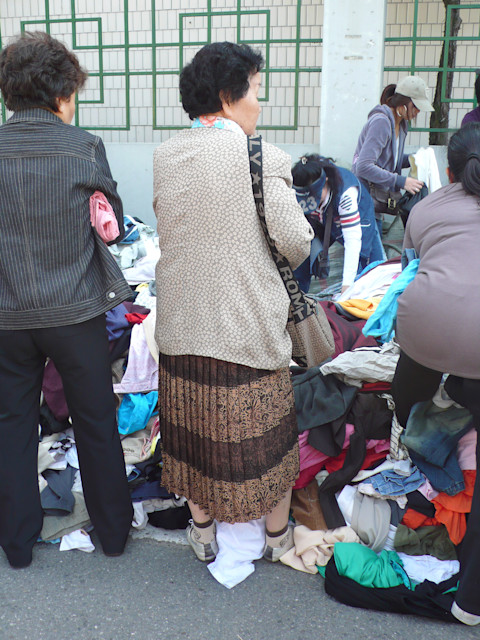
In a city where the cost of living is comparable to other global metropolises, Dongmyo remains a budget-friendly haven. For just one to five dollars, you can score a T-shirt, jeans, a tailored jacket, or a pair of worn-out sneakers from an unknown brand. During the week, Dongmyo hosts around 300 stalls, but come the weekend, it balloons to over 600, taking over entire blocks with its sprawling chaos.
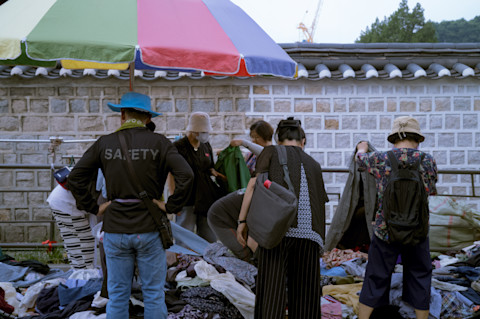
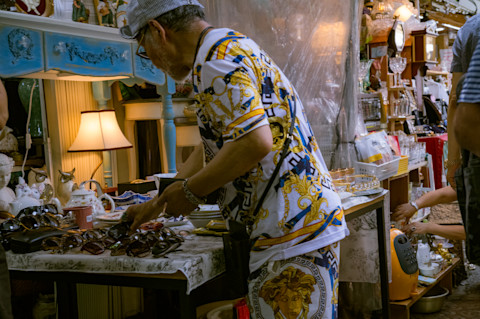
Dongmyo also shatters the shopping structures we’ve grown accustomed to. As the market has gained popularity among young Koreans in recent years, more vintage shops have sprung up catering to younger crowds, but the heart of Dongmyo remains an outdoor market—rain or shine, except during monsoon season or heavy snow. Every morning, trucks roll in, unloading mountains of clothes and trinkets onto sprawling mats that take over the sidewalks and streets. There are no clear boundaries between shops; people just dig through piles of clothes, hoping to uncover hidden gems. Cash is the primary currency here, though a few stalls now accept bank transfers.Back in 2007, I brought designer Gaspard Yurkievich here during his visit to Seoul. As we strolled through the narrow alleys at sunset, I realized this was the real Seoul—the kind of hidden gem you won’t find in a sleek travel guide.
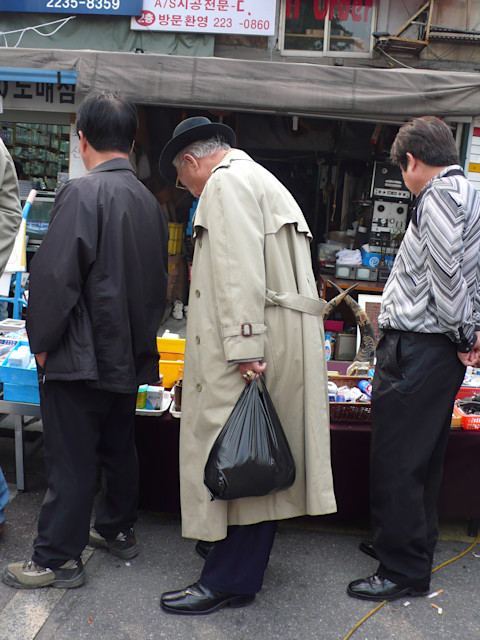
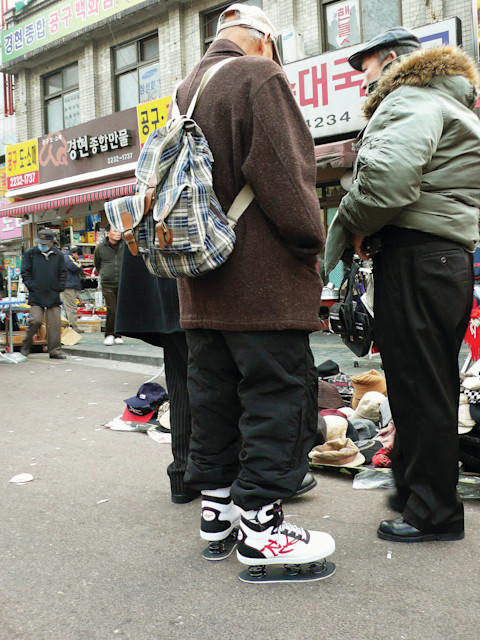
Less (Kim Tae Kyun), a photographer I met recently, remarked that the market seems to be growing, and it’s true. There’s more of everything—better quality, more variety—than there was ten years ago. Dongmyo has become a melting pot where the personal histories of countless individuals converge to form a symbol of modern-day Seoul. Amid the chaos, you’ll find strange streets, eccentric elders, and a cycle of life where everything, from designer clothes to street food, flows back into this vast flea market. In a city constantly evolving with sleek fashion and polished philosophies, Dongmyo remains unchanged. It’s one of the last true places for adventure in Seoul—if you’re willing to explore it.
The NAVY Lab,
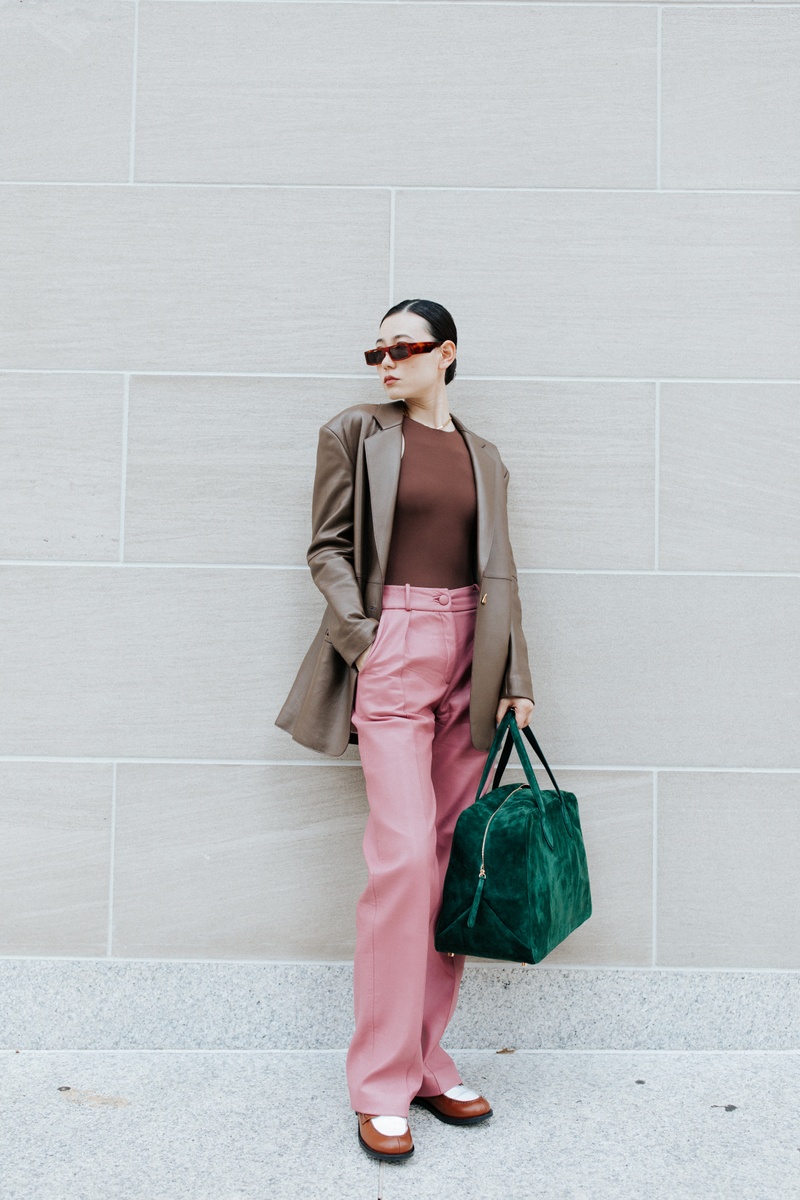 Women’s guide to styling blazers – what to wear with a female blazer Women’s guide to styling blazers – what to wear with a female blazer From smart and tailored to casual and oversized, women’s blazers fit just about every look. This wardrobe essential can transition from a day at the office to a glam night out. In this guide, we’ll explore what to wear with a female blazer , wherever the day may take you.
Women’s guide to styling blazers – what to wear with a female blazer Women’s guide to styling blazers – what to wear with a female blazer From smart and tailored to casual and oversized, women’s blazers fit just about every look. This wardrobe essential can transition from a day at the office to a glam night out. In this guide, we’ll explore what to wear with a female blazer , wherever the day may take you. 
